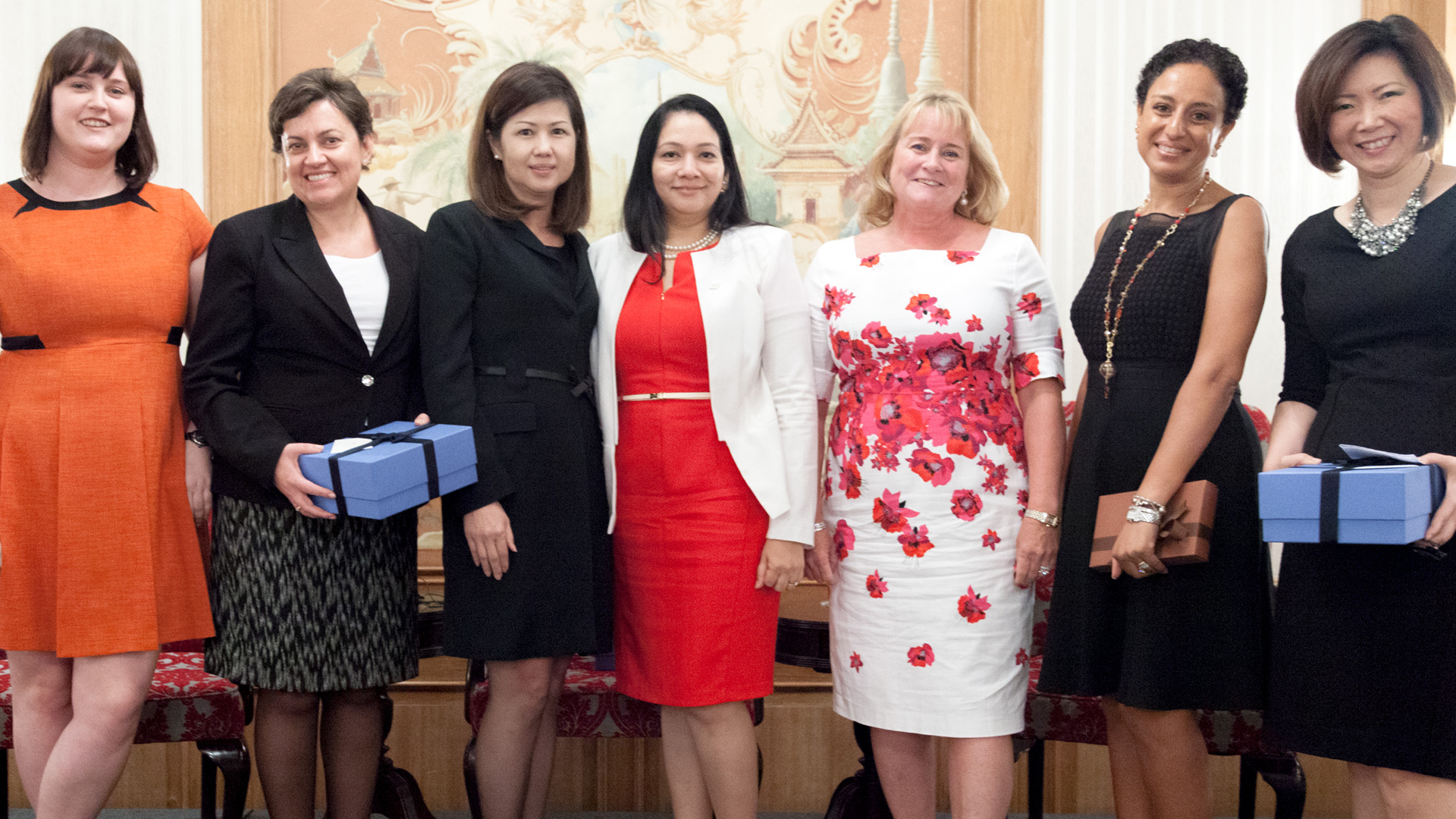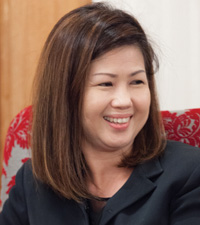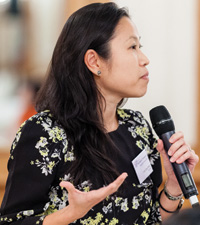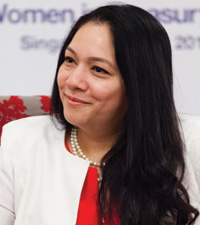Sunday 8th March 2015 marked International Women’s Day (IWD) with thousands of events held across the globe to recognise the economic, political and social achievements of women. In this article, Treasury Today Asia looks at the wider debate surrounding the importance of diversity in the workplace and the achievements of our own Women in Treasury initiative.

Speaking at Treasury Today Asia’s recent Women in Treasury Forum, held in Singapore in the week following IWD, Rachael Coleman, Director of MSD’s Asia treasury centre, explained that, “gender diversity in the workplace is still such a big issue because of both perceived and real inequalities between men and women.” Moreover, inequalities are not confined to the workplace, gaining access to the right social circles both within – and outside of – the workplace can be difficult for women.
In discussing the significance of gender equality, it should be considered as a concern for everybody, male or female. One problem is the stigma that is frequently attached to feminism: it has often been perceived as a divisive term and a controversial movement. These connotations can make it unappealing to be associated with and changing perceptions is both an imperative and a challenge. As Lauren Oakes, Head of Global Liquidity Sales in Asia Pacific for Goldman Sachs, explains “the workplace is a reflection of societal norms and beliefs; it’s hard to change one without the other.”

The change in outlook to an open-minded – and less divided – view that individuals should be recognised on their own merits (rather than on fixed gender stereotypes) is a laborious process, made more so when many companies lack diversity programmes. “Where much of society still struggles on this topic, is understanding the communication necessary and the openness to new perspectives and cultures required in order to harness the benefit of diversity,” explains Shelly Maneth, CFO of ConneXions Asia, who attended the forum.
Workplace inequality
Today, the sad reality is that gender inequality still resonates loudly in the workplace. More than 100 countries have laws that restrict women’s participation in the economy, in most regions working women are less likely to fill full-time positions and far fewer female executives and senior managers are employed.
Where progress has been seen, it is often sluggish and the struggle to significantly advance gender equality is slow. For example, the number of women in senior management positions globally only rose from 19% in 2004 to 22% in 2015 – furthermore, the proportion has declined in many countries since 2009 (including Canada, Mexico, Argentina, Australia, Germany and Singapore). If women’s representation in the workplace continues at the current pace, female hiring, promotion and retention rates will be insufficient to adequately advance gender equality within the next decade.
Emblematic approaches

The good news is that, across the globe, comprehensive campaigns, industry specific initiatives and celebrations are raising awareness and inviting everyone to join the conversation on how to achieve gender equality. Shelly recognises the importance of Treasury Today’s Women in Treasury Forums as “they are a reminder of how much more needs to done to effectively promote diversity in the workplace.” The outlook seems positive, discussing her experience at the recent forum in Singapore, Shelly said, “my key takeaway was a sense of hope – I love the fact we’re talking about this, that people from major MNCs to small SMEs were represented; that there were men in the room during discussions; and that there were over 20 different nationalities and cultures adding perspectives.”
When all parties involved understand the importance of equality initiatives, collaborative efforts can triumph. And since 78% of respondents to Treasury Today’s 2014 Women in Treasury Global Study envisage finishing their career within a corporate treasury environment, it is increasingly important for their voices to be heard – alongside their male colleagues to shape that working space.
It is promising that recognition regarding the importance of collaborative efforts is increasing; one of the Forum’s male attendees, Ivo Distelbrink, Head of Global Transaction Services, Asia Pacific, Bank of America Merrill Lynch, explained, “to address this broader issue at the enterprise level, by making changes to company policies and putting in place the structures needed to promote equality, gender needs to become a leadership issue rather than purely a women’s issue.”

Levelling the playing field
The Women in Treasury 2014 Study indicated major barriers to gender equality based on assumptions of aspirations, a lack of role models in senior positions and the continued existence of an ‘old boys’ network. Whilst the desire to encourage a beneficial and harmonious mix of identities in any professional environment is shared by most, whether to or not to approach the lack of diversity with quotas divides opinion. 38% of respondents to the study believe there should be a quota for female representation on boards and an equal amount disagree, with 24% unsure. These statistics demonstrated little change to 2013’s study results yet the recent panel discussion held at the forum in Singapore saw all four members of the panel state that positions should be awarded based on merit – not quotas.
A recurring opinion is that of a general dislike for quota systems but an acknowledgement that they could, in certain circumstances, be necessary to kick-start integration in the fastest way. However, concerns from the 2014 Study also suggest that positive discrimination could be damaging for women in the long term due to the perception of achievements based solely on a ‘leg-up’. According to Shelly, “if you see and understand the bias that exists in today’s world, you’ll recognise this necessitates the ‘management’ of diversity at this juncture.” Currently, whether this ‘management’ should be dictated by numbers or left to the responsibility of businesses and associations is largely uncertain. In Asia, with the exception of Central Asian Kyrgyzstan’s 30% female participation quota for parliament, the upper echelons of management have largely turned away from quotas. Even when quotas exist, their success is not guaranteed, it is estimated that 17% of companies listed on India’s main stock exchanges failed to comply with new laws to appoint at least one female board director by the March 2015 deadline. At our forum, gender targets were put forward by the panellists as a potentially preferable option. This target can be judged by the extent to which diversity is embraced as the norm – where it is the pervasive culture in organisations.
All-encompassing
Discussions about gender equality often – and appropriately – open the dialogue on the importance of having diverse nationalities, age ranges, ethnicities (and so on) in the workplace. Although it is pertinent to reflect and celebrate female innovators, it is of equal importance to be aware that other identities could also require further recognition. Similarly to gender equality, problems surrounding prejudice must be tackled when striving for all-encompassing diversity in the workplace.

Deepali Pendse, Managing Director, Head of South East Asia Corporate GTS Sales, Bank of America Merrill Lynch, a panellist at the forum, explained that in her workplace, much is being done to eradicate unconscious bias. That is to say assumptions based on gender, race or any other characteristic about others that individuals can often hold but may not necessarily be entirely aware of. These expectations can unfairly affect our perception and judgement of others, but there are ways you can work towards removing the influence this bias may have over your decision-making process. “Therefore, it is about each and every manager – when hiring or considering promotions available – thinking about the bias held in their mind. By trying to remove and eliminate potential biases as much as possible, you actually give the job or promotion to the best person.”
Panellist Sonia Clifton-Bligh, Director of Johnson & Johnson’s Regional Treasury Service Centre, Asia Pacific, discussed the importance of nurturing diverse talent. “We all come to work with influences – our relationships, associations and experiences – and I think we should recognise them and take time to understand that people have something beyond what they present at work.” Consequently, you can start to recognise people as individuals and, “as a manager, you can complement the dynamic by bringing a balance of members. Coaching and mentoring the skills from a diverse team, it’s definitely a success factor for the organisation.”
Getting heard
As is all too well known, success isn’t certain. Christine (Jang) Tan, Managing Director, Regional Head MNCs Asia Pacific, J.P. Morgan explained in the panel discussion that “although there has been greater recognition of the challenges women face to promote inclusiveness – particularly in the areas that require greater flexibility (childcare, for example) – there is still some distance to cover”. “Everybody is talking but you don’t necessarily see statistics changing; creating diversity is a really tall order,” affirms Chiew Bee Ng, Regional Treasurer for Tyco International Asia.

A topic which repeatedly comes up is what women can do to make their voice heard. The tendency for women to refrain from speaking up is often due to assumptions that they are being aggressive when they do, explains Lilian Sim, Head of MNC Regional Sales at J.P. Morgan. “Changing this perception is the responsibility of both organisations and individuals but will require time.” What clearly gives women the confidence to be more vocal about inequality is each other. Discussing her experience at the Women in Treasury Forum, Marie Tyndall, Regional Treasury Manager for Johnson & Johnson, said that “by coming to an event like this, you can take some reassurance from the fact that you’re not on your own. Hearing inspirational leaders speak about the concerns and challenges they experience along their career journey in treasury or finance, gives us all greater confidence that we can succeed, as we all experience very similar issues”.
By seeing inspirational leaders speaking about shared concerns for women working in treasury or finance, greater confidence can be built.” Similarly, what resounded with Lillian was the realisation that women, with the support of others, can empower themselves. “I think it will give women more confidence about what they should be speaking up for. If there’s something that doesn’t work for you, why not have a conversation with your management about alternative options? You could be pleasantly surprised.” As Shirley Hiew, Treasurer, Asia Pacific, DuPont, points out: “To get ahead, you cannot do it alone – nobody can do it alone, we have to do it as a team.”